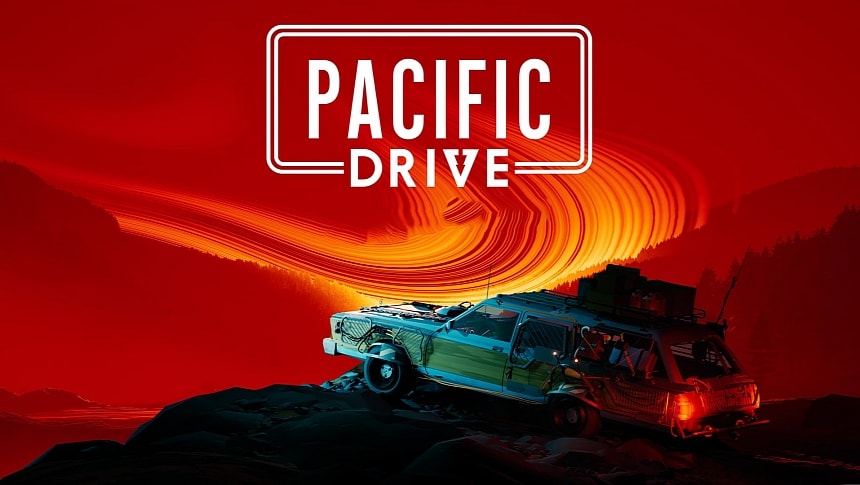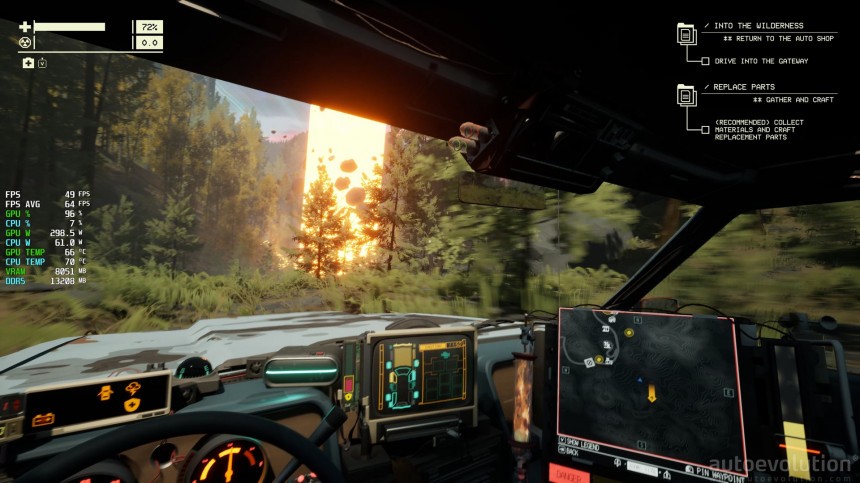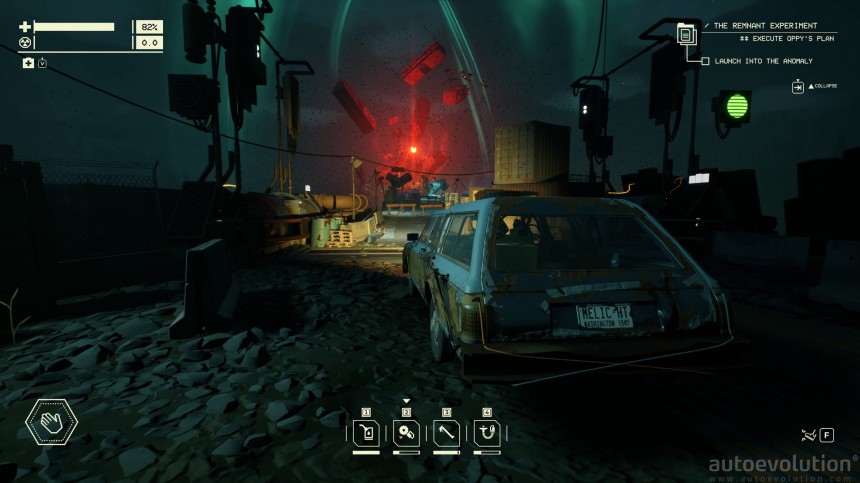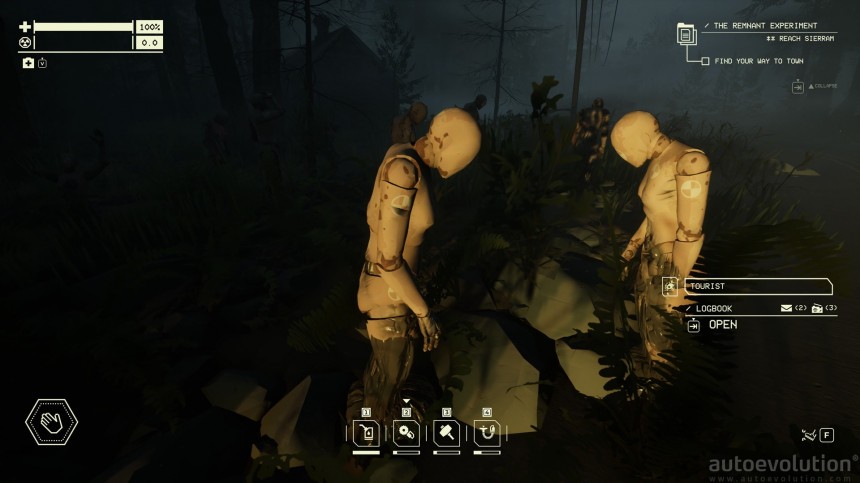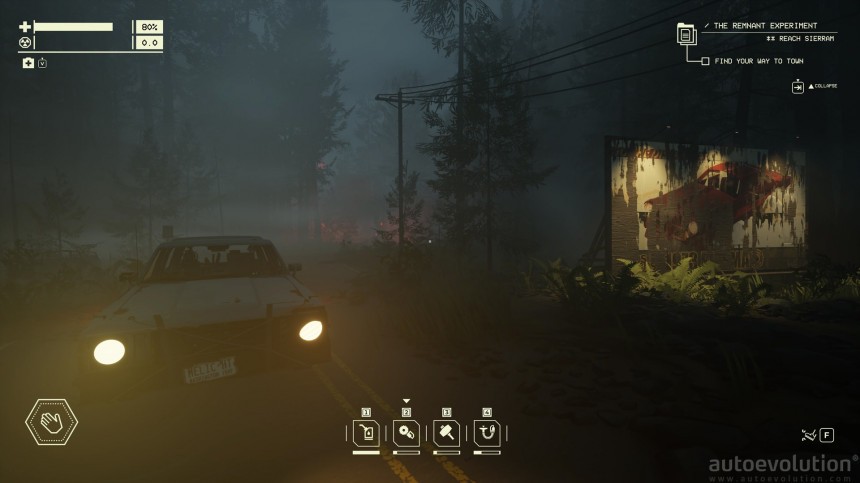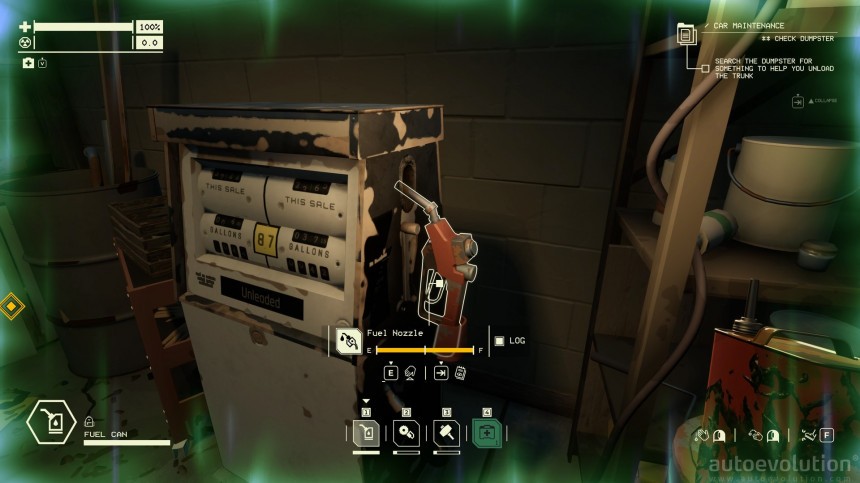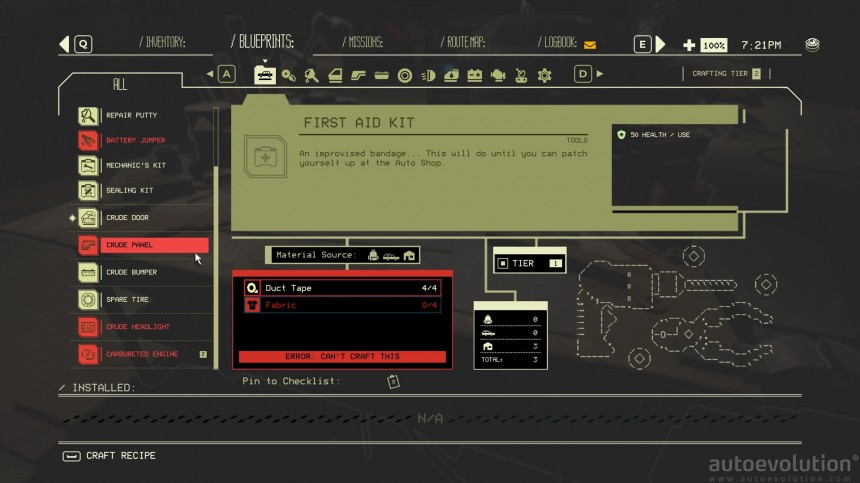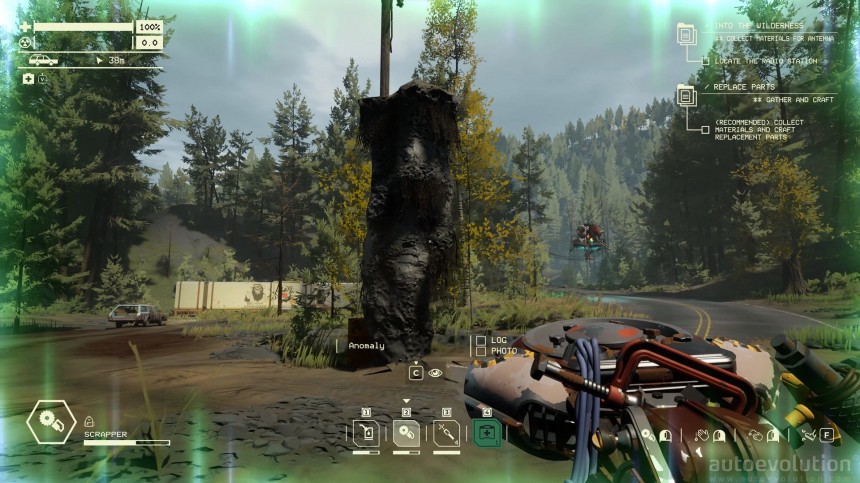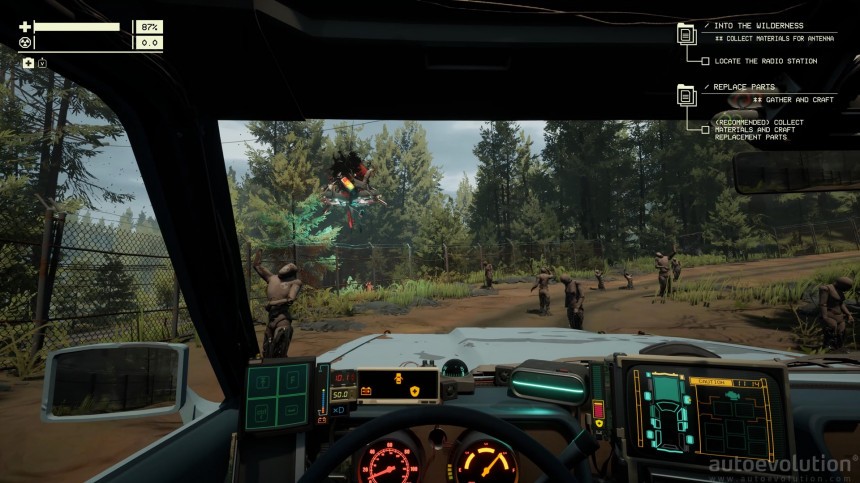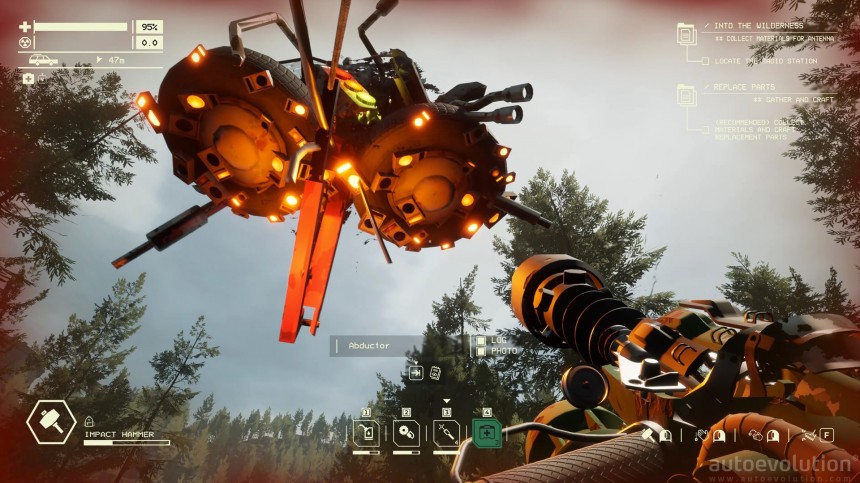I can't recommend Pacific Drive enough to anyone over-saturated with the AAA monsters from 2023. This is your stop if you're looking for an out-of-the-ordinary adventure behind the wheel. Atmospheric, mysterious, and enthralling, Pacific Drive is another great start for 2024.
My first few minutes in Pacific Drive from Ironwood Studios were akin to my childhood experience of watching enrapturing movies for the first time, like Spielberg's E.T. or Jumanji, but with a twist of Twin Peaks.
Pacific Drive's game design is on point and well-executed. The gameplay loop is exactly what it needs to be, just like in Dredge or Dave the Diver. It knows what it is and doesn't pretend to be otherwise.
The graphical style serves the narrative and brings an intense level of immersion to the table, or should I say, to the driver's seat. The sound design and soundtrack add heavily to the atmosphere and make you feel like you're there, much like the immersion in Firewatch.
The story is well crafted and well acted, and you always want to pull at the narrative threads of the ever-deepening mystery.
This is where you come in. You're an average Joe trying to deliver some undisclosed package near the "Olympic Exclusion Zone" walls abandoned for over 13 years. As you drive your station wagon to the dropoff point, the scenery gets progressively... weirder. It starts out sunny and warm, but then it gets dark and rainy, only to peak with a physics-breaking phenomenon.
Then, you inevitably get teleported inside the zone, where the mystery enshrouds you. As you progress, you keep pulling on these narrative threads, and little by little, you discover the chilling story behind it. One of the most captivating things you learn upon meeting your car for the first time is that it's a Remnant.
A Remnant is an object that binds with a person like a state of narrative quantum entanglement, and the more you use your Remnant, the more insane you grow over time. Your station wagon literally represents your sanity. I found this twist extremely intriguing.
The Exclusion Zone is where matter changes constantly due to atomical instability, so naturally, from that point, your mission becomes to exit the freaky Area 51-like experimental place. As you might have guessed, it's not that easy.
During your unsettling adventures, you "meet" a bunch of characters that aid you with information about your journey. Like in Firewatch, you don't physically see them, but communicate over the radio. Not everyone you talk to gets along among themselves, so their relationship is... dynamic, let's say. The actors portray the characters exceptionally well, and the direction is masterful to what concerns the nature of the game.
However, the story doesn't unfold only through dialogue and environmental storytelling, but through text as well; a lot of text. Much like in Doom or Doom Eternal, where the focus isn't on creating a cinematic experience like The Last of Us, you find a lot of descriptions about pretty much everything that catches your eye. The best part is that it's well-written, immersive, and easy to follow.
For instance, take the creepy hoard of lifeless test dummies standing in the middle of the road like frozen zombies that appear out of nowhere. If you scan and read about them, you'll discover bits and pieces of the mystery surrounding them. Oh, NEVER kick or run them over with your car! However, feel free to throw a flair at them from afar and see what happens.
Suffice it to say that Pacific Drive nails the plot and does a fantastic job of creating an immersive atmosphere that keeps pulling you in as you discover more and more of the story.
When I first saw Pacific Drive and the game design similarities, I thought, "Nice! It's a combo between Dredge and Dave the Diver. Dredge the Diver, if you will." Well, after going deep into the weeds of Pacific Drive, I'm happy to report that I was right. Don't get me wrong, they're not clones, far from it, in fact.
The roguelike mission-based cyclical formula or gameplay loop where you venture forth into the dangerous world to gather resources and upgrade your vehicle, only to do it time and time again but better each time, is executed beyond reproach. And the car feels as right as summer rain. It handles differently on tarmac than on mud, which enriches the gameplay experience.
So, of course, Pacific Drive appealed to my indie-like senses. Although given the advanced graphics and production levels, this game is far from what you'd call an "indie" game. Its publisher, Kepler Interactive, has released games like Scorn and Sifu, which, by definition, eliminates Pacific Drive from being an independent game. But I digress.
The moment you get into the '70s-'80s Chevy Suburban-like station wagon driver seat for the first time, it's a trip in and of itself. I was expecting an arcade-style driving experience, meaning you get into the car and simply drive, but no. It's more like a Mudrunner game, having to look around the interior and manually do everything yourself.
So, you gas up the car, charge the battery, open the door, turn the keys in the ignition, put it in drive, toggle the radio and the headlights, turn on the windshield wipers, and even honk. It's very immersive, and this active driving gameplay direction will appeal to players accustomed to a get-in-and-drive approach.
The game design is run- or mission-based, just like in Dave the Diver. From your garage or base of operations, you select a mission and destination, drive and brave the perilous world filled with anomalies and weird robots out to get you, gather resources, pop back to your garage, upgrade your car, and craft items, only to rinse and repeat the process. Every incursion feels like an X-files episode written by Stephen King.
Just like in Dredge, a major part of the game design is the inventory represented by your backpack. You have a finite but growing space to store all the resources and items you scavenge on your eerie travels. The best part is that you get to play OCD Tetris while managing your inventory.
You pick up individual items and rotate them to fit the available space best. I'm a sucker for this mini-game design.The car also has room in the back for boxes that act as an extension for your inventory.
Everything related to your vehicle, like headlights, bumpers, hood and side panels, doors, windows, tires, and everything else you can think is upgradeable. When you return to the garage, you put everything you don't need in a locker to save more space for your next adventure.
Now for the "bad" part: the menus. The materials you gather serve the purpose of crafting better parts for your car and other items like jumper cables, repair putty, and so on. Navigating these menus can be overwhelming at first glance because you have too much information relayed to you at any given time during these interactions.
There is an upside, however. Every menu and element within it is perfectly explained to you in the legend section with the click of a button. You quickly become familiar with everything, and it becomes second nature.
The combat isn't from your typical shooter or melee-based action game. You have to avoid enemies, each with its own type of attack. For example, your first enemy looks like a flying freakish toaster-like robot akin to Fallout 4's Mister Handy multipurpose robot. Their attack is based on a tethered suction cup that deals damage by grabbing and hurling you over yonder.
The same goes for your car, so be careful not to drive directly underneath them. Also, the environment itself can be your enemy. You'll find pockets of instability filled with radiation that will continuously drain your life until you leave that area.
Another enemy comes in the shape of an airplane blade sticking out of the ground violently rotating on a preset route. An interesting type of enemy was ejected out of some contraption and acted like a magnetic EMP mine.
If one gets on your ride, you must stop the car, put it in park mode, and hit it with your impact hammer tool until you "kill" it. You'll have to use tools like the Scrapper, a resource-gathering vacuum cleaner, and many others during missions to survive.
The "drive, survive, repeat" motto perfectly describes what you do in Pacific Drive. The best part is that it doesn't feel repetitive because every fresh incursion offers new excitement and dread.
The time mechanics of the day and night cycle and the weather effects are great for immersion. I felt more at ease during sunlight and took my time exploring areas, whereas, during the night, all I wanted was to finish the jobs as fast as I could. The art style does a superb job of creeping you out when needed. Not to mention the eerie-sounding ambient music and forest sound effects, which really make you feel like you're in the thick of it. This game seriously needs a VR update.
The mirrors are something special, to say the least. Which really surprised me. I wasn't expecting a game of this nature to have real-time mirror reflections, but I found them to be some of the best in the business. With DirectX 12 and the settings cranked all the way up to 11, everything is reflected in real-time and looks as sharp as possible.
Performance-wise, if you want to run it at 4K Ultra settings, you will need quite a beefy PC. I used a rig with an Nvidia RTX 4080 GPU and an Intel i9-13900 CPU. On native (no DLSS) 4K Ultra, I got an average of 63 fps. With DLSS on Quality, I got an extra 20 fps bump. DLSS on Balanced gave me 27 extra fps, and Performance mode upped that cap to 35 frames per second.
It also has an Ultra Quality setting, but the pre-release version I played on was bugged in this regard, and it switched to Auto DLSS whenever I tried Ultra Quality. It's all the same for me because I always play only with Quality DLSS. As far as my eyes are concerned, it yields the best visual results while offering at least 20 more frames per second.
Another visual bug I found was while I was doing something gameplay-wise. I kept jumping into the exterior of a wooden shack, and my camera was clipping through the geometry of the building. Not by a lot, but hey, it was out there.
It's nothing too much to worry about. Marvel's Spider-Man 2 cost $300 million and had worse issues when it came out. I didn't find any other bugs worthy of mentioning, given that I was playing on the pre-release version, and these things have a habit of going away rather quickly after launch.
Pacific Drive is out on February 22 on PlayStation 5 and PC through Steam and Epic Store. Sadly, it's not coming out on Xbox just yet. It's clear that aside from Helldivers 2, Sony snatched another great console exclusive. Being a 30-dollar game also sweetens the pot. Oh, and if you want to check it out on PC for free, there's even a demo.
Pacific Drive's game design is on point and well-executed. The gameplay loop is exactly what it needs to be, just like in Dredge or Dave the Diver. It knows what it is and doesn't pretend to be otherwise.
The graphical style serves the narrative and brings an intense level of immersion to the table, or should I say, to the driver's seat. The sound design and soundtrack add heavily to the atmosphere and make you feel like you're there, much like the immersion in Firewatch.
The story is well crafted and well acted, and you always want to pull at the narrative threads of the ever-deepening mystery.
What's it all about?
The story or narrative setting of Pacific Drive is an enrapturing one straight from the first thirty seconds of the game. Everything takes place in 1998 inside a walled-off area in the Pacific Northwest, where the government ran some "utopian tests" in the late '40s.This is where you come in. You're an average Joe trying to deliver some undisclosed package near the "Olympic Exclusion Zone" walls abandoned for over 13 years. As you drive your station wagon to the dropoff point, the scenery gets progressively... weirder. It starts out sunny and warm, but then it gets dark and rainy, only to peak with a physics-breaking phenomenon.
Then, you inevitably get teleported inside the zone, where the mystery enshrouds you. As you progress, you keep pulling on these narrative threads, and little by little, you discover the chilling story behind it. One of the most captivating things you learn upon meeting your car for the first time is that it's a Remnant.
A Remnant is an object that binds with a person like a state of narrative quantum entanglement, and the more you use your Remnant, the more insane you grow over time. Your station wagon literally represents your sanity. I found this twist extremely intriguing.
The Exclusion Zone is where matter changes constantly due to atomical instability, so naturally, from that point, your mission becomes to exit the freaky Area 51-like experimental place. As you might have guessed, it's not that easy.
However, the story doesn't unfold only through dialogue and environmental storytelling, but through text as well; a lot of text. Much like in Doom or Doom Eternal, where the focus isn't on creating a cinematic experience like The Last of Us, you find a lot of descriptions about pretty much everything that catches your eye. The best part is that it's well-written, immersive, and easy to follow.
For instance, take the creepy hoard of lifeless test dummies standing in the middle of the road like frozen zombies that appear out of nowhere. If you scan and read about them, you'll discover bits and pieces of the mystery surrounding them. Oh, NEVER kick or run them over with your car! However, feel free to throw a flair at them from afar and see what happens.
Suffice it to say that Pacific Drive nails the plot and does a fantastic job of creating an immersive atmosphere that keeps pulling you in as you discover more and more of the story.
Drive, Survive, Repeat
Last year, among the neverending AAA (huge budget) games like Resident Evil 4 Remake, TLOU P1 on PC, Dead Space Remake, Alan Wake 2, Baldur's Gate III, and so on, one of my favorite games was Dredge. In this indie-like title, you gather resources while trying to unravel the Lovecraftian mystery enveloping the narrative.When I first saw Pacific Drive and the game design similarities, I thought, "Nice! It's a combo between Dredge and Dave the Diver. Dredge the Diver, if you will." Well, after going deep into the weeds of Pacific Drive, I'm happy to report that I was right. Don't get me wrong, they're not clones, far from it, in fact.
The roguelike mission-based cyclical formula or gameplay loop where you venture forth into the dangerous world to gather resources and upgrade your vehicle, only to do it time and time again but better each time, is executed beyond reproach. And the car feels as right as summer rain. It handles differently on tarmac than on mud, which enriches the gameplay experience.
So, of course, Pacific Drive appealed to my indie-like senses. Although given the advanced graphics and production levels, this game is far from what you'd call an "indie" game. Its publisher, Kepler Interactive, has released games like Scorn and Sifu, which, by definition, eliminates Pacific Drive from being an independent game. But I digress.
So, you gas up the car, charge the battery, open the door, turn the keys in the ignition, put it in drive, toggle the radio and the headlights, turn on the windshield wipers, and even honk. It's very immersive, and this active driving gameplay direction will appeal to players accustomed to a get-in-and-drive approach.
The game design is run- or mission-based, just like in Dave the Diver. From your garage or base of operations, you select a mission and destination, drive and brave the perilous world filled with anomalies and weird robots out to get you, gather resources, pop back to your garage, upgrade your car, and craft items, only to rinse and repeat the process. Every incursion feels like an X-files episode written by Stephen King.
Just like in Dredge, a major part of the game design is the inventory represented by your backpack. You have a finite but growing space to store all the resources and items you scavenge on your eerie travels. The best part is that you get to play OCD Tetris while managing your inventory.
You pick up individual items and rotate them to fit the available space best. I'm a sucker for this mini-game design.The car also has room in the back for boxes that act as an extension for your inventory.
Now for the "bad" part: the menus. The materials you gather serve the purpose of crafting better parts for your car and other items like jumper cables, repair putty, and so on. Navigating these menus can be overwhelming at first glance because you have too much information relayed to you at any given time during these interactions.
There is an upside, however. Every menu and element within it is perfectly explained to you in the legend section with the click of a button. You quickly become familiar with everything, and it becomes second nature.
The same goes for your car, so be careful not to drive directly underneath them. Also, the environment itself can be your enemy. You'll find pockets of instability filled with radiation that will continuously drain your life until you leave that area.
Another enemy comes in the shape of an airplane blade sticking out of the ground violently rotating on a preset route. An interesting type of enemy was ejected out of some contraption and acted like a magnetic EMP mine.
If one gets on your ride, you must stop the car, put it in park mode, and hit it with your impact hammer tool until you "kill" it. You'll have to use tools like the Scrapper, a resource-gathering vacuum cleaner, and many others during missions to survive.
The "drive, survive, repeat" motto perfectly describes what you do in Pacific Drive. The best part is that it doesn't feel repetitive because every fresh incursion offers new excitement and dread.
Graphics and Sound Design
A game like Pacific Drive doesn't need the latest AAA (huge budget) graphics like The Last of Us Part II, Cyberpunk 2077 with Overdrive RTX, or Red Dead Redemption 2. I found the "low-poly" aesthetic and mystery unfolding before my eyes immensely captivating right from the start. In my eyes, the art style of any title trumps photorealistic graphics every time, and this game nails the aesthetic without fault.The time mechanics of the day and night cycle and the weather effects are great for immersion. I felt more at ease during sunlight and took my time exploring areas, whereas, during the night, all I wanted was to finish the jobs as fast as I could. The art style does a superb job of creeping you out when needed. Not to mention the eerie-sounding ambient music and forest sound effects, which really make you feel like you're in the thick of it. This game seriously needs a VR update.
The mirrors are something special, to say the least. Which really surprised me. I wasn't expecting a game of this nature to have real-time mirror reflections, but I found them to be some of the best in the business. With DirectX 12 and the settings cranked all the way up to 11, everything is reflected in real-time and looks as sharp as possible.
It also has an Ultra Quality setting, but the pre-release version I played on was bugged in this regard, and it switched to Auto DLSS whenever I tried Ultra Quality. It's all the same for me because I always play only with Quality DLSS. As far as my eyes are concerned, it yields the best visual results while offering at least 20 more frames per second.
Another visual bug I found was while I was doing something gameplay-wise. I kept jumping into the exterior of a wooden shack, and my camera was clipping through the geometry of the building. Not by a lot, but hey, it was out there.
It's nothing too much to worry about. Marvel's Spider-Man 2 cost $300 million and had worse issues when it came out. I didn't find any other bugs worthy of mentioning, given that I was playing on the pre-release version, and these things have a habit of going away rather quickly after launch.
90/100
Pacific Drive is a great video game. It combines excellent game design elements like run-based missions, a seriously engaging story, a heavily atmospheric aesthetic, and a pitch-perfect sound design, that make it one of the most endearing titles of 2024, yet. I cannot recommend this game enough to anyone who self-declares to be a "true gamer."Pacific Drive is out on February 22 on PlayStation 5 and PC through Steam and Epic Store. Sadly, it's not coming out on Xbox just yet. It's clear that aside from Helldivers 2, Sony snatched another great console exclusive. Being a 30-dollar game also sweetens the pot. Oh, and if you want to check it out on PC for free, there's even a demo.
